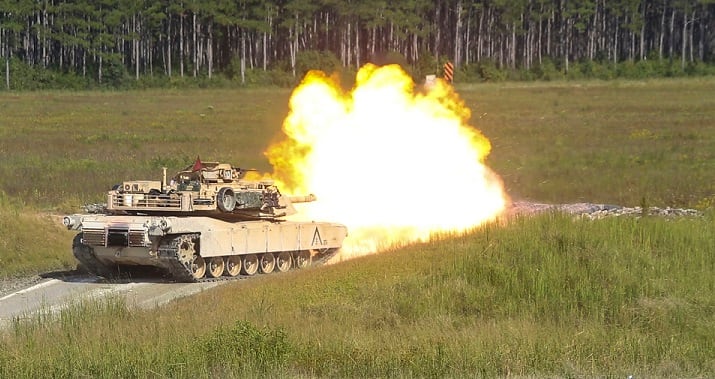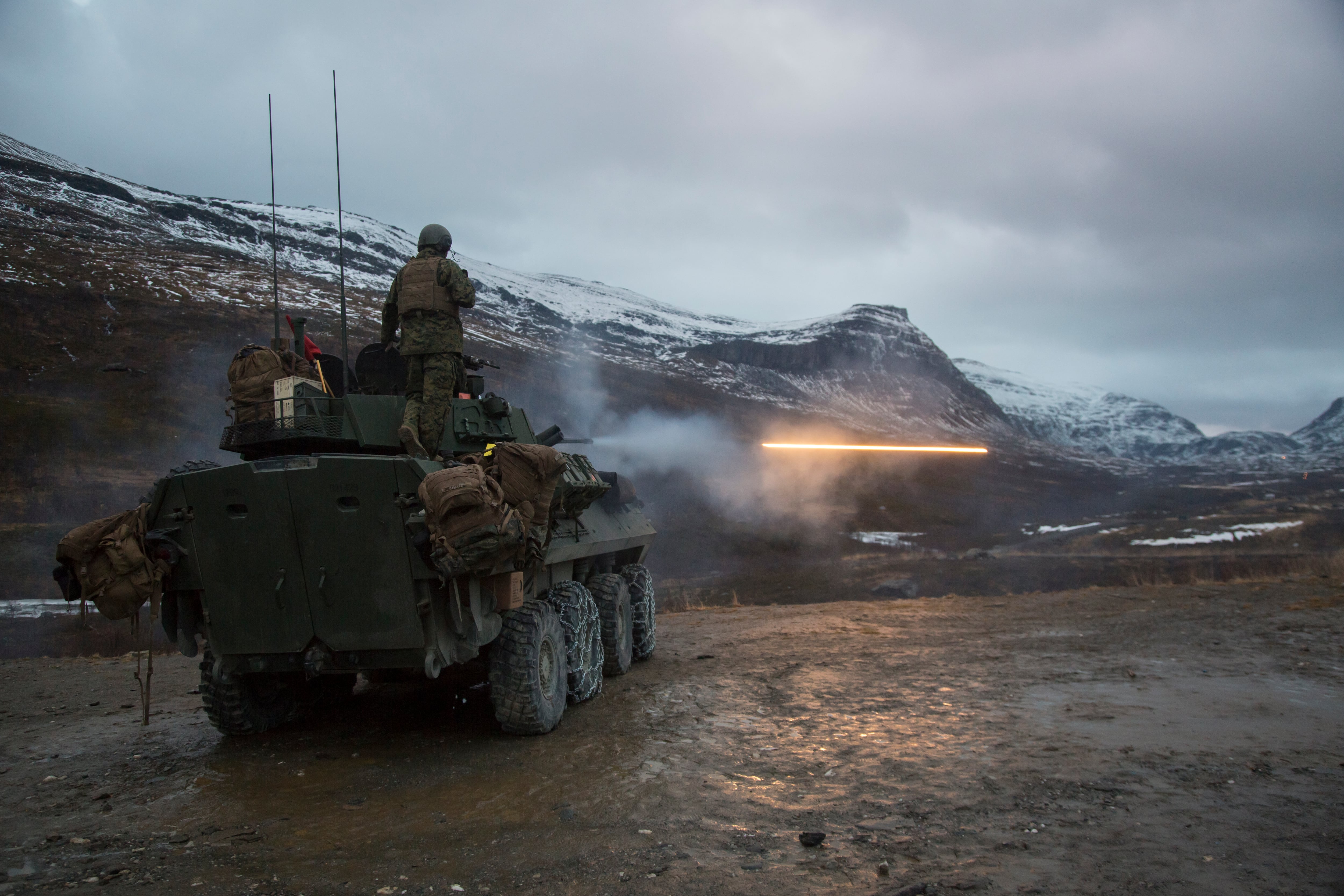The top Marine told reporters Wednesday that current layout and organization of the Corps’ Light Armored Reconnaissance units were better equipped to handle another conflict in the Middle East instead of rising near-peer rivals.
The comments from the Commandant of the Marine Corps Gen. David Berger come as the Corps announced it was axing all of its tank battalions as part of an effort to modernized and redesign the force to contend with more sophisticated enemy forces.
“Light Armored Reconnaissance today is built great for another Desert Shield, Desert Storm,” Berger said Wednesday. “I don’t see that likelihood as being very great.”
The Corps’ light armored vehicle, or LAV, is decades old and the Corps has spent years slapping new upgrades and weapons to help boost survivability of the vehicle. The Corps is looking at potential prototypes to replace its LAV fleet, but that could be a decade away.
RELATED

The future of LAR rests within manned and unmanned teaming, the ability to do collections at sea and operate autonomously or semi-autonomously with a lighter footprint, Berger explained. The top Marine noted that reconnaissance and counter reconnaissance was vital to a fight against near-peer rivals.
“No question in my mind” when going up against a capable adversary “that it pays to be spread out and dispersed,” Berger told reporters Wednesday.
“What we have to do now is transition to a lighter footprint, more expeditionary, more in support of a littoral environment,” Berger said. Can that unit “collect forward of itself even if offshore into the water.”
As part of the Corps’ effort to redesign the force over the next 10 years, the Marines are cutting tanks, reducing F-35 squadrons from 16 to 10 aircraft, cutting some rotary wing assets and cannon artillery, among others. The Corps says it plans to cut 12,000 personnel over the 10-year period.
A series of wargames conducted between 2018 and 2019 helped inform the Corps’ decision to divest of tanks and outmoded units and equipment that will have trouble surviving in fight with peer adversaries like China, according to a Marine Corps force redesign report.
From those wargames the Corps learned that the unit that shoots first has a “decisive advantage” on the battlefield and forces that can operate inside the range of enemy long-range precision fires “are more operationally relevant than forces which must rapidly maneuver to positions outside the ”weapons engagement zone, the report reads.
The Corps’ decision to divest of tanks, cut ground cannon artillery and light attack air platforms has stoked some criticism. Tanks historically have had success in high-end and urban warfare for decades boasting devastating firepower highly lethal to ground forces.
But tanks and armored vehicles have had trouble surviving against the threat of precision strike and the plethora of drone and reconnaissance systems flooding conflict zones across the Middle East.
“Mobility inside the WEZ [ weapons engagement zone] is a competitive advantage and an operational imperative,” the Marine Corps report reads.
The Corps instead is looking for mobile systems and units that can survive within the reach of precision fires to “attrit adversary forces," create dilemmas for the enemy and “consume adversary ISR resources,” according to the report.
Shawn Snow is the senior reporter for Marine Corps Times and a Marine Corps veteran.





